Before starting, I sketched out several versions of the finished blanket, showing different sizes and arrangements of the rectangle blocks. My favorite version is one with a random look. This twelve-shaft double weave has three blocks. Block 1 is a solid color across the warp. Block 2 has a narrow, vertical contrasting rectangle. Block 3 has a wide, horizontal contrasting rectangle. The warp threading determines the width of the rectangles. But the height of the rectangles is determined by the treadling pattern. I decided to use a Fibonacci sequence of numbers in random order to guide my treadling options as I weave.
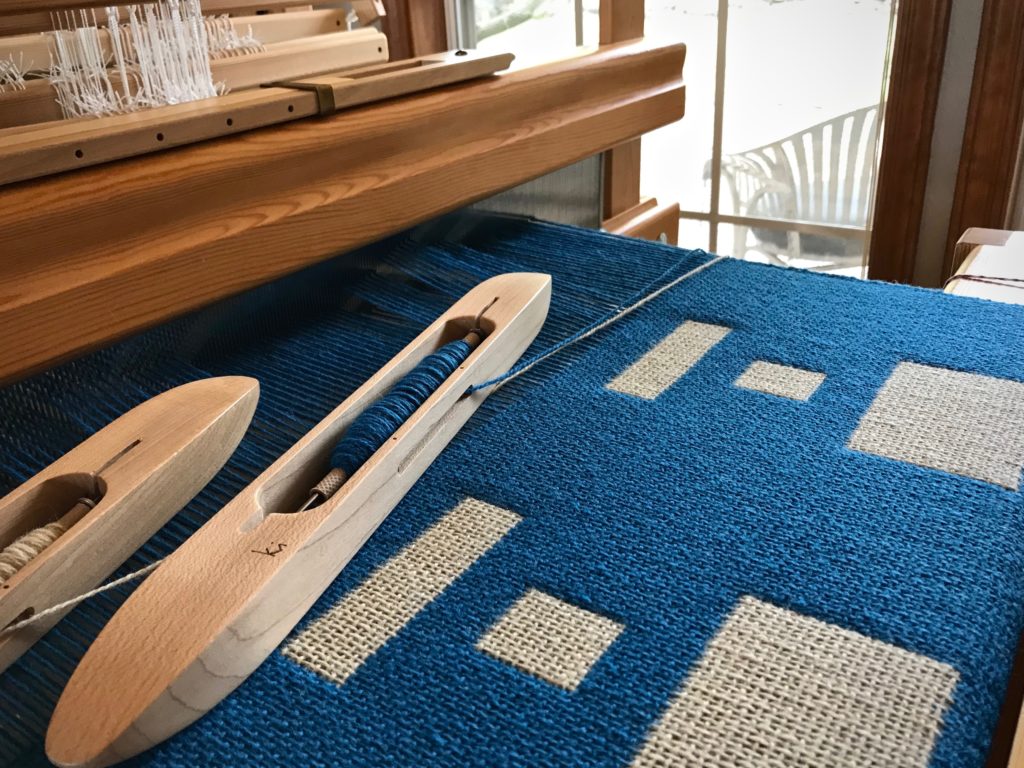
Low-Tech Random Fibonacci Sequence
1 Determine the desired range of the Fibonacci sequence. 1, 2, 3, 5, 8, 13
2 Determine the number of repeat options for each block (one repeat is 4 picks per double-weave layer).
- Block 1, solid color – 2 repeats every time
- Block 2, narrow rectangle – 2, 3, 5, 8, or 13 repeats
- Block 3, wide rectangle – 1, 2, 3, or 5 repeats
3 Write each number of the sequence on individual squares of paper. Make three sets of these numbers. 1, 2, 3, 5, 8, 13
4 Fold each paper square in half and place in a container at the loom. Mix thoroughly.
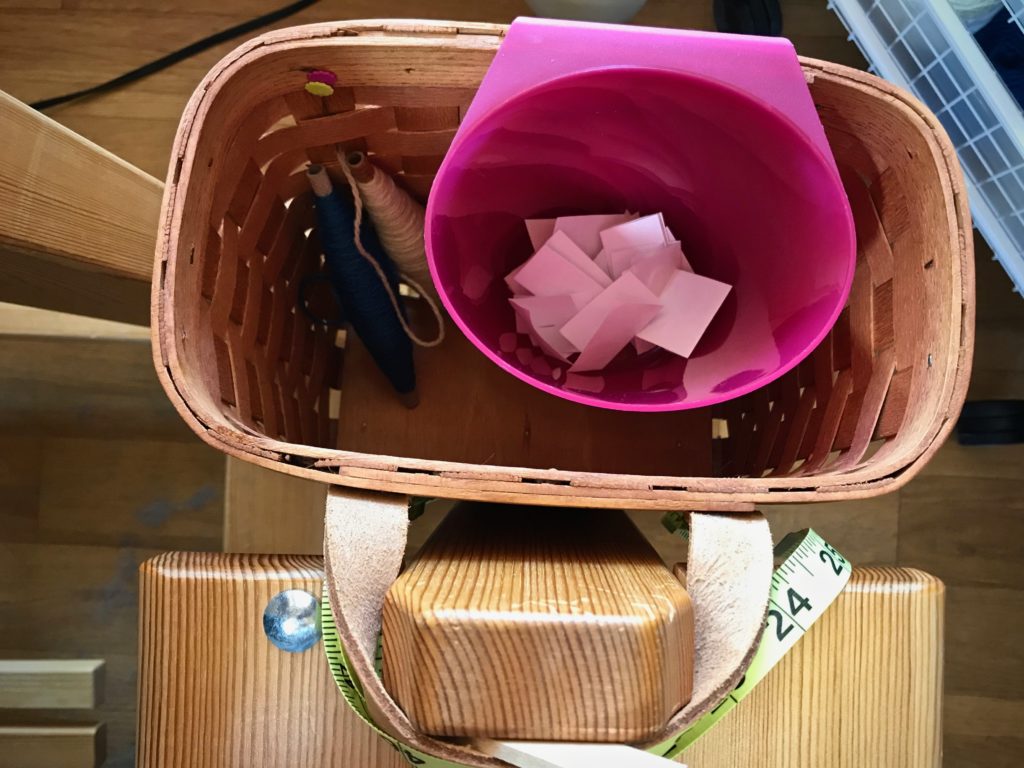
5 Randomly select a paper square to reveal the number of repeats for the next narrow or wide rectangle block.
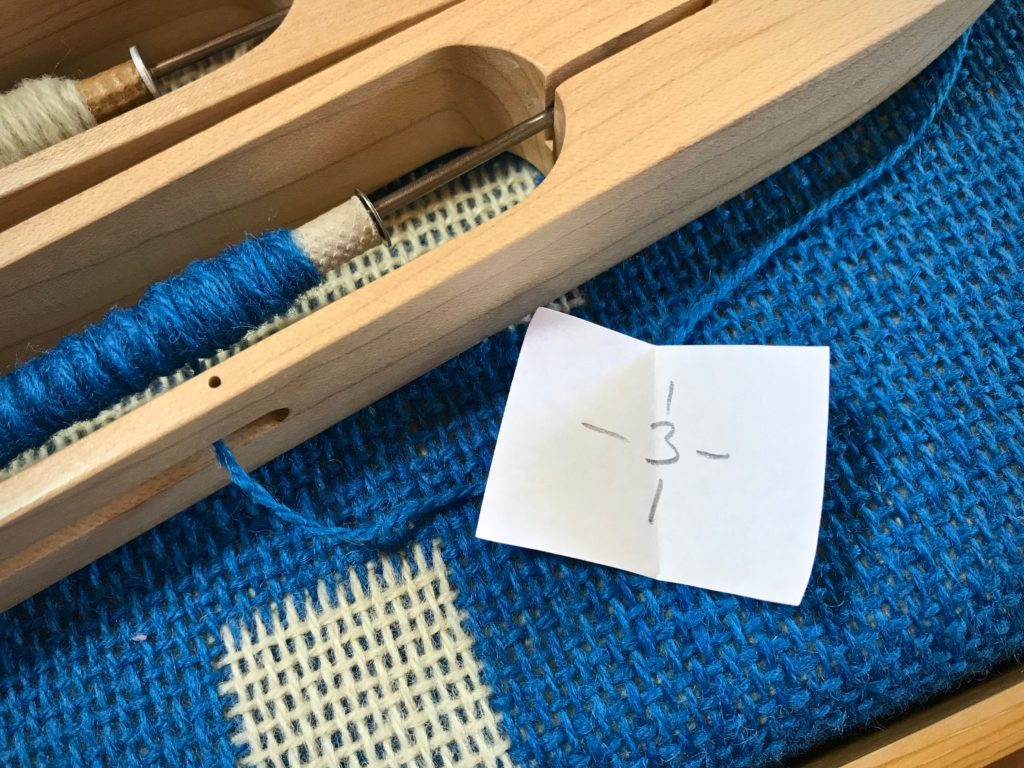
For this blanket I have a woven hem and border, and then two repeats of Block 1 (solid color) between alternating Block 2 (narrow) and Block 3 (wide) rectangles of varying heights.
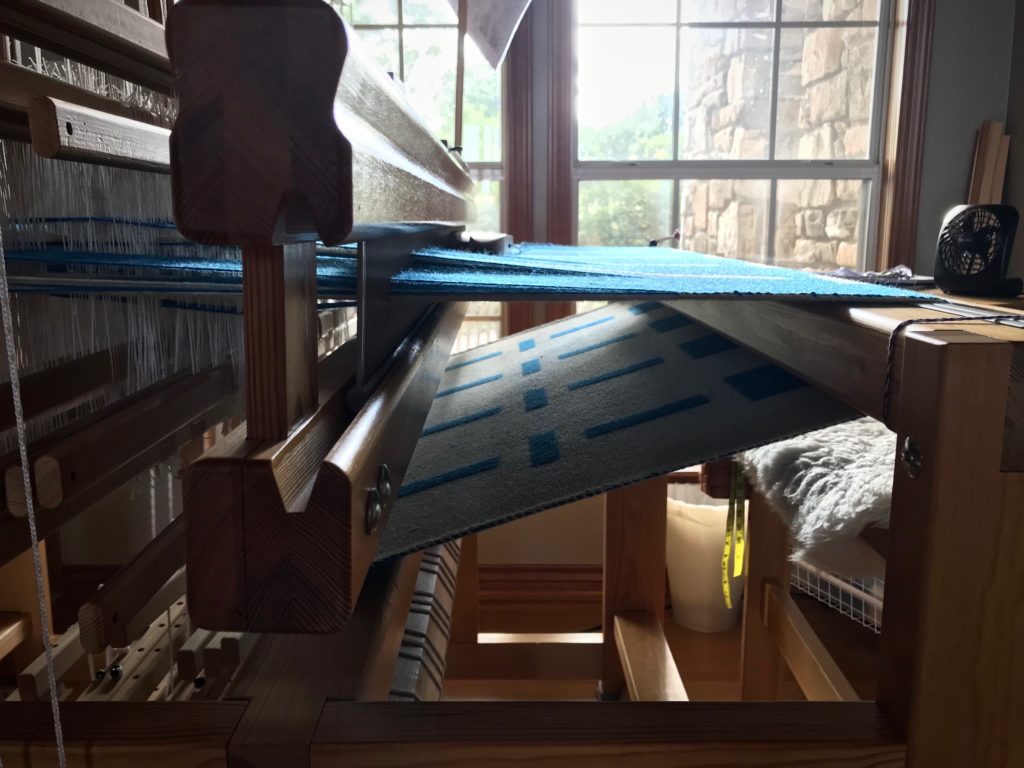
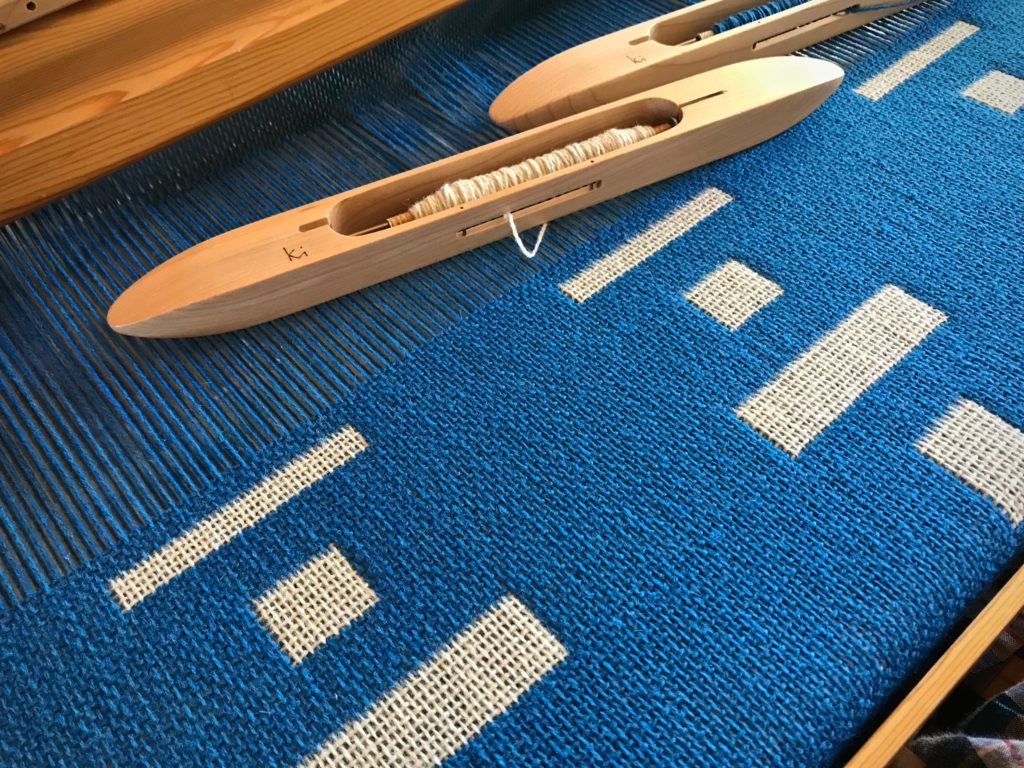
Surprise is built in which makes it hard to leave the loom. “Just one more block,” I tell myself…
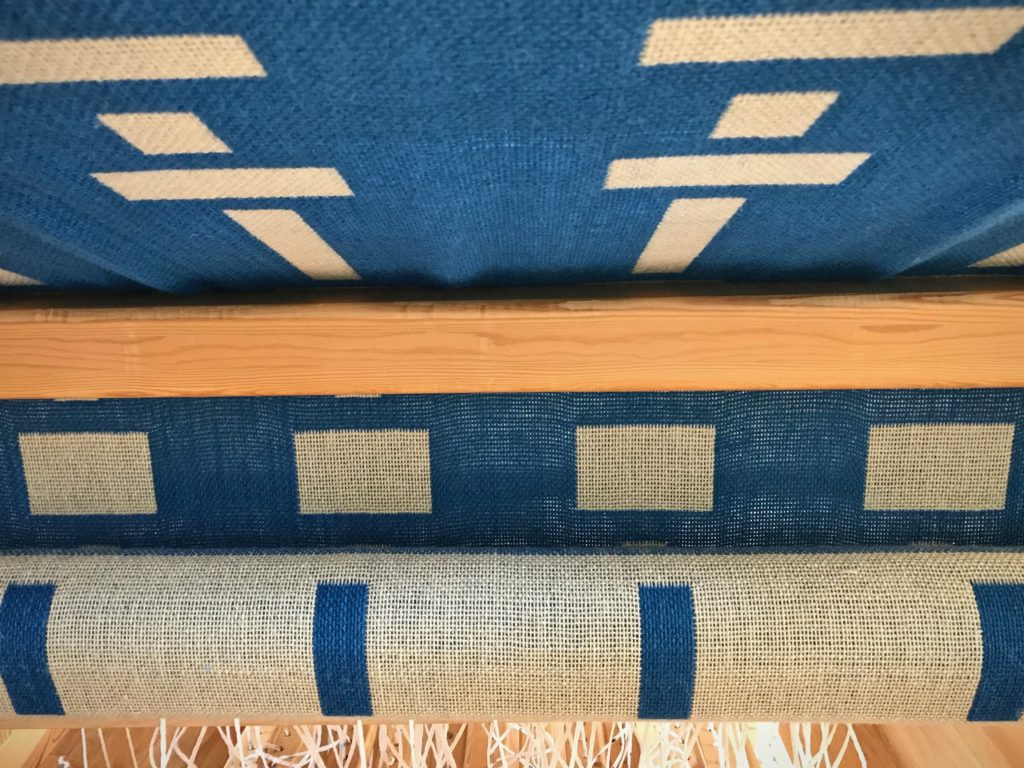
May you be greeted by random (happy) surprises.
Happy Weaving,
Karen

What a fabulous piece of work!
Hi Beth, I’m glad to have some success after such a rocky start with this Tuna wool. Thanks for your sweet compliment!
Happy threads,
Karen
I love the controlled randomness and the fun of the unknown design.
Hi Maggie, I’ve always been intrigued by random-looking designs. But the control part is important to keep some coherence. I appreciate your observations!
Happy weaving,
Karen
Love it! I can’t wait to see the whole blanket off the loom. This design would also make a great rug.
Weave on
Betsy
Hi Betsy, You’re right. This would make an incredible rug design! Hmmm, I’ll have to give that some thought.
Thanks for the input,
Karen
What a wonderful used of Fibonacci!!!!! And, you have fun finding out the next block to weave…always a surprise.
I hope to visit soon as there are so many of “our kind” of stories to share with you from the Navajo mothers and daughters….so, so many!!!!
Thank you, for being in my life…
Hi Charlotte, Fibonacci sequence is a mathematical wonder when you consider how often it appears in creation. I like coming up with ways to use it in design.
Looking forward to hearing your stories.
All the best,
Karen
Beautiful!
Thanks so much!
How adventurous! I can’t wait to see how it turns out!
Love that shade of blue, Karen.
Hi Annie, This shade of blue is incredible!
Karen
I love this random use of Fibronacci. Your blanket is going to be fabulous. I try to use Fibronacci in my Mexican Tapestries, but have never tried picking a number at random. This sounds like so much fun and I am definitely going to try it.
Hi Michele, It’s always fun to mix things up in unexpected ways.
Happy weaving,
Karen
Wow!! Great result using ‘random’ repeats…
Or.. Is it God’s guidance?
Nannette
Hi Nannette, I’m glad you like it. If it comes out great, we can say it was God’s guidance; but if it turns out to be a flop, I better take the credit/blame.
Thanks,
Karen
Lovely result, Karen. Love that beautiful blue!
Hi D’Anne, Good to hear from you. This blue is the star of the show! Vavstuga calls it Lapis Lazuli.
Thanks,
Karen